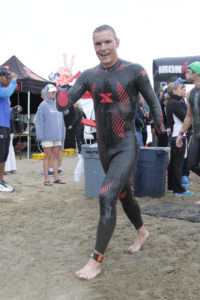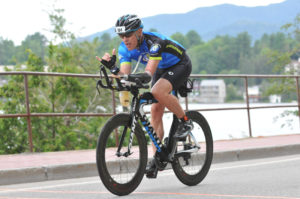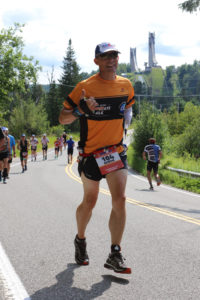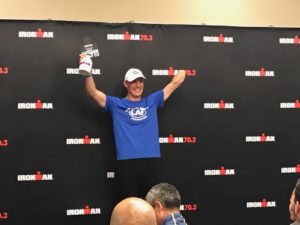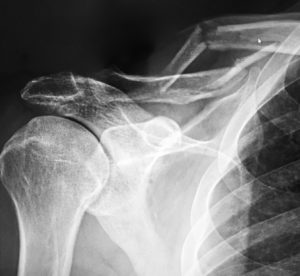…or how to go from idea to founding team before you do.
Much has been written about how important “team” is to the success of a startup and surely no team is more important than the founding team. If true, then why is it that so many entrepreneurs look to blind luck or happenstance as they go about building one? I know that I have been guilty of spending more time interviewing and vetting a potential employee than I did a co-founder.
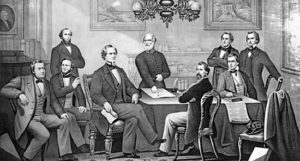
I’ve been fortunate to be part of the founding teams for three startups in Silicon Valley, with my third landing me in New York (post-acquisition) three years ago. Since then I’ve had the pleasure of meeting many New York entrepreneurs embarking on their first entrepreneurial journeys. All of them, without fail, have an idea they are passionate about. Some may have already quit their day job to chase their dream. A few might have raised some seed funding to help finance it. What I find most surprising though, is that rarely is there an established founding team. Invariably, I meet solo entrepreneurs looking to build a team. If this is you read on.
Thanks to Steve Blank and Eric Ries of Lean Startup fame, there is plenty to read on how to develop your business or product. But how should you approach developing a founding team? There is little doubt that going it alone stacks the odds against you. Based on a survey of 650 companies, the 2012 Startup Genome Report identified that “solo founders take 3.6x longer to reach scale stage compared to a founding team of 2 and they are 2.3x less likely to pivot” (the latter being of particular relevance given the report also identified that “startups that pivot once or twice raise 2.5x more money, have 3.6x better user growth and are 52% less likely to scale prematurely than startups that pivot more than 2 times or not at all”).
The best time to start building a founding team is long before you quit your day job and a great way to start is with a Kitchen Cabinet. No, not that kind of cabinet. The term Kitchen Cabinet was coined in the 1800’s during Andrew Jackson’s presidency of the United States. It was used to describe a collection of unofficial advisers he consulted (to the chagrin of some) in parallel to the United States Cabinet. As you search for like-minded individuals that might have an interest in your idea, instead of asking them to quit their well-paying jobs at Google or Facebook to join you as a co-founder and work for no salary until you can (hopefully) raise some funding, instead pitch them your idea and see if they’d be willing to dedicate a few hours a week to kick the tires on it.
You’re looking for people with complementary skills or experience to your own. People with differing perspectives that can act as a sounding board and question your beliefs and assumptions, all in the name of honing your idea into a well-formulated business opportunity. To be clear, this isn’t someone you have to pay. A software development partner or consultant willing to build your product for cash and/or equity doesn’t qualify, they come with their own agenda. And you should be upfront with everyone that there is no guarantee that anything will come of their efforts. They aren’t committing to joining you should you start something and you aren’t committing that they would be part of it, even if you did. Of course, the whole point of the exercise is to be on the lookout for a potential co-founder or early hire, but that bridge could be six or nine months away. Your Kitchen Cabinet will force you to get your idea out of your head and subject it to the critical thinking of others while the risks are still low; after all, no one has given up their day job yet. And you’ll get a chance to work with people you may later wish to partner with (or not as the case may be).
I first got exposed to the concept of a Kitchen Cabinet in 2004 thanks to Manish Chandra, (currently Founder/CEO of Poshmark). He had an idea for a collaborative bookmarking site, yet as a first-time entrepreneur faced the challenge of how to build a founding team around it. Over a period of nine months or more he invited over a dozen individuals, people he’d worked with, friends, and friends of friends, to meet at his house on Saturday mornings to discuss, conceptualize and prototype what ultimately became Kaboodle (acquired by Hearst Corporation in 2007). I was one of those individuals who gave up their Saturday mornings to refine the idea and many months later took a leap of faith and gave up my day job to start Kaboodle with Manish and Chetan (another Kitchen Cabinet member). By then we’d all had a chance to work together vetting the idea, researching solutions and building prototypes. Manish got to observe who was committed, who contributed beyond a few hours at the weekend and who might fit culturally. And, there was an added bonus, since there’s nothing quite like a bit of co-creation to bind a founding team together. I’ve used the Kitchen Cabinet multiple times to good effect. My only regret is the one time I didn’t.
But, what if you aren’t able to find anyone to join your Kitchen Cabinet? Well, either your idea isn’t very compelling, or you aren’t very compelling I’m afraid. Either way, you should stop and reevaluate what you are doing. If you can’t even get a couple of people to give up a few hours a week to work on your idea what makes you think you could successfully attract investors, employees or customers later on?
And no-one is going to steal your idea. I hate to break the bad news, but ideas are two-a-penny. What matters is execution. Taking the acorn of an idea and growing it into an oak tree is indescribably hard and any thoughts you share today will evolve so much between now and your ultimate success, that the risk of someone stealing your idea and getting it right is comparatively low compared to the risk of keeping it to yourself and going it alone. And, once you’ve incorporated, you can protect your company’s intellectual property by making anyone who contributed to its early development an advisor; in exchange for advisory shares, they assign all intellectual property over. A just reward for those in the Kitchen Cabinet that helped get the company started, yet, for whatever reason, wasn’t able to jump on board.
I share my Kitchen Cabinet story with entrepreneurs, usually, after they have told me how great their idea is and, with an expectant look, continue on to say that they just need to find a great CTO to join them as a co-founder. Sell me on your idea. Enlist me in your cause. Invite me to join your Kitchen Cabinet by all means. Just don’t ask me to be your co-founder the first time we meet. That’s like asking someone to marry you on a first date.

